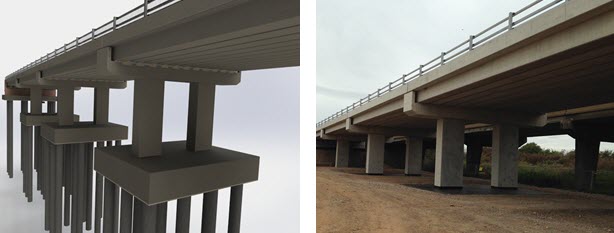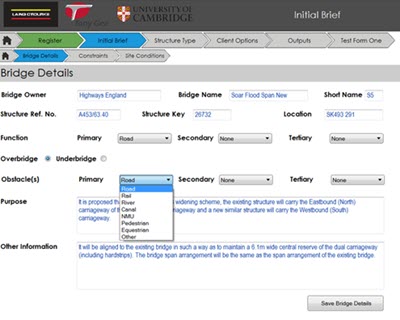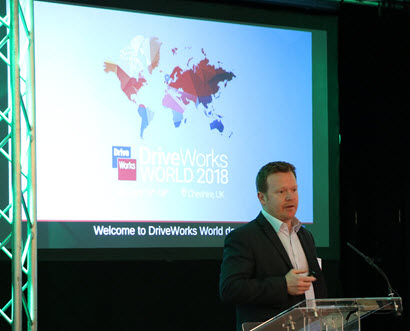Through its operations around the world, across building and infrastructure sectors, Laing O’Rourke aims to secure its position as the recognised leader for innovation and excellence in the construction industry.

Transforming the Bridge Industry
Recently, Laing O’Rourke collaborated with Tony Gee and Partners and Cambridge University to develop a unified digital delivery process for the bridge industry. The project configures bridge designs from a set of key inputs and a library of parametric components.
The key focus of the project is to create a common standard by synchronising data and protocols. The aim is to improve interoperability between different parts of the bridge building process.
The project integrates best practices for manufacturing, assembly and design, to ensure consistent data formats and reduce manual processes required between stages.
For this to happen, naming conventions and output files from each stage of the process need to be structured and arranged in a systematic way. Using DriveWorks, Laing O’Rourke can specify rules to determine how and where each file is saved.

‘Before’ and after: a SOLIDWORKS render of a bridge compared to a photograph of the bridge taken immediately following construction
Laing O’Rourke was the lead partner of the research project consortium and they offered extensive experience in logistics, building designed structures, manufacturing through to site transportation, installation and handover.
Tony Gee and Partners provided valuable insight related to design codes, engineering calculations, materials and design options. The University of Cambridge offered technical experience into state of the art methods for design optimisation and data structuring.


Government Funding
In 2014, Innovate UK, the governments innovation agency, announced a £5.6 million funding competition, drawing on the UK’s evolving expertise in ‘Building Information Modelling’ (BIM) enterprise. Laing O’Rourke’s collaborative research project received funding support from Innovate UK, which was a strong catalyst for them to start developing a set of design configuration tools for bridges.
Digitising Bridge Design Processes
The project uses standards to simplify bridge processes and reduce the time it takes to complete a bridge. The current design process is complex and typically a fully detailed design would take around 30 weeks to complete
By digitising the design process with this project, Laing O’Rourke has identified savings that could see bridge designs produced in days or weeks instead of months or years.
The design configuration tools, created using SOLIDWORKS and DriveWorks, provide a smoother digital process for the design, manufacture and assembly of components, which reduces the time it takes to complete a bridge.
At DriveWorks World 2018, Laing O’Rourke’s Digital Engineering Leader, Dr Scott McGovern, told us more about how the project uses DriveWorks.
Using DriveWorks in the Construction Industry
“We wanted to implement a system that gave users the ability to make informed decisions so they could quickly see the impact of their decisions on the overall design.
We’re using DriveWorks in three main areas within our toolset. Firstly, we used the software to build the user interface and capture user defined inputs. We then linked these inputs into our structured dataset that would drive the rules to define component dimensions and features.
Finally, we utilised DriveWorks’ design automation capabilities to automate the development of model assemblies and engineering drawings of the bridge.”


The Benefits
“By using DriveWorks and SOLIDWORKS, we hope that we will be able to dramatically reduce the time taken to reach the final design of a bridge.
This has several benefits as the impact of decisions can be investigated much earlier in the process and reduce the many design iteration cycles that are currently undertaken.
The impact of design on cost will be quickly realised. This allows the design to be truly informed by cost rather than the traditional process of costing up a design.
Construction times are likely to be made shorter and component selections will be finalised earlier, this eliminates the need for last minute design changes and reduces delivery risk on the project.
Bridge design will be simplified to a component led solution, allowing greater ability for design optimisation of the individual components that make up the kit of parts.”
Reducing Turnaround Time
“Our extensive experience in designing for manufacturing and digital engineering allowed us to take the lead when developing the toolset for the research project. There are two key parts to the toolset: the data and the software tools. We structured the data to provide a reusable set of digital assets, but this alone does not make up the tools.
DriveWorks has allowed us to automate the routine processes that we undertake on this data, day in and day out, with traditional bridge design. This automatic creation of models and drawings rapidly improves the turnaround time to reach sign-off on designs and makes all of the downstream benefits possible.”
“The results give us and our clients confidence in the price and programme. The data that’s generated also allows effective lifecycle quality management from reusable digital assets.”